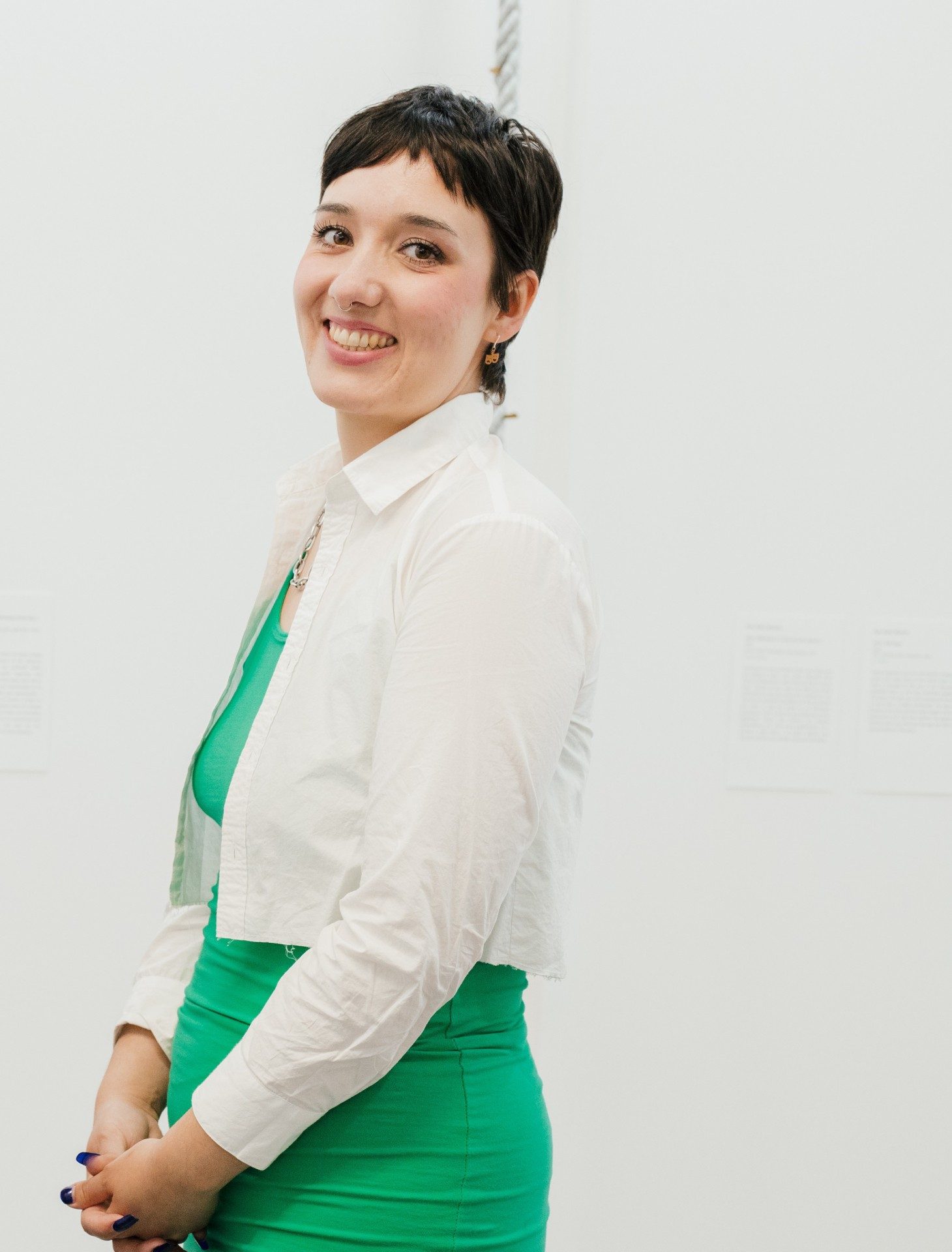Sarah Piché

Image credit: Ash KG
About the Artist
Originally from Tiohtià:ke (Montréal), Sarah Piché holds a BFA in Art History and Studio Arts from Concordia University. She finds any excuse to be surrounded by and in collaboration with artists, whether as a curator, coordinator, writer, copy-editor, assistant, or fellow painter. Since becoming a member of the Ethnocultural Art History Research Group at Concordia University in 2020, Piché has curated several exhibitions, has published writings and has worked on designing publications. Some recent projects include curating the 2023 Foire Plural kiosk exhibiting the winners of the Claudine and Stephen Bronfman Fellowship, working as a liaison for the Worlding Public Cultures Montreal 2023 conference, and speaking about student activism in the 2024 CGC Annual Conference at Carleton University.
In between projects, Piché spent 2023 blissfully painting with a Jeunes Volontaires grant in her Chabanel studio. Most recently, she has pivoted to graduate research in Communications and Media Studies at Carleton University (Ottawa, ON) to analyze visual culture and image production through a differently generative lens. Her current interests are all things incendiary, particularly the richly troubling and confessional images of wildfires within anthropocentric discourse. Parallel to her graduate research, Piché is working through incendiary themes in her art practice. She is looking forward to producing work in this area for a June 2024 group show at WestLab Gallery (New York, New York).

Five of Booths dyptich by Sarah Piché. Photo credit: Camille Dubuc.
About the Project
Sarah’s primary concern during the Romany Eveleigh Residency was to develop a repertoire of compositions that combine divinatory aesthetics and symbols relating to climate change. Because her focus has been on the 2023 Southern Quebec wildfires, Sarah describes her studio work as a practice-led and investigative model of pyromancy. Pyromancy, for her, is simply the act of reading stories in images of flames and is something we all do when encountering news of wildfire disaster. However, Anthropocene discourse often flattens and universalizes such narratives. Throughout her project, Sarah was thinking through Nicholas Mirzoeff’s theory of the (an)aesthetics, or anesthetizing qualities, of visualizing climate disaster through photography.
Her project sought, instead, to look elsewhere than the flames themselves. For example, in Four of Boots and Five of Boots, the boot serves as a symbol of the state and policy. Using tarot cards as a grounding thread, the paintings are designed to be arranged in different constellations. Sarah’s intention is that a trio of the Four of boots, King of Swords, and One of Wands would generate one open-ended story of wildfire in Quebec, whereas three other paintings would refer to another. Throughout the two-week residency, she completed eight tarot paintings and two that ask: what is worth preserving?

